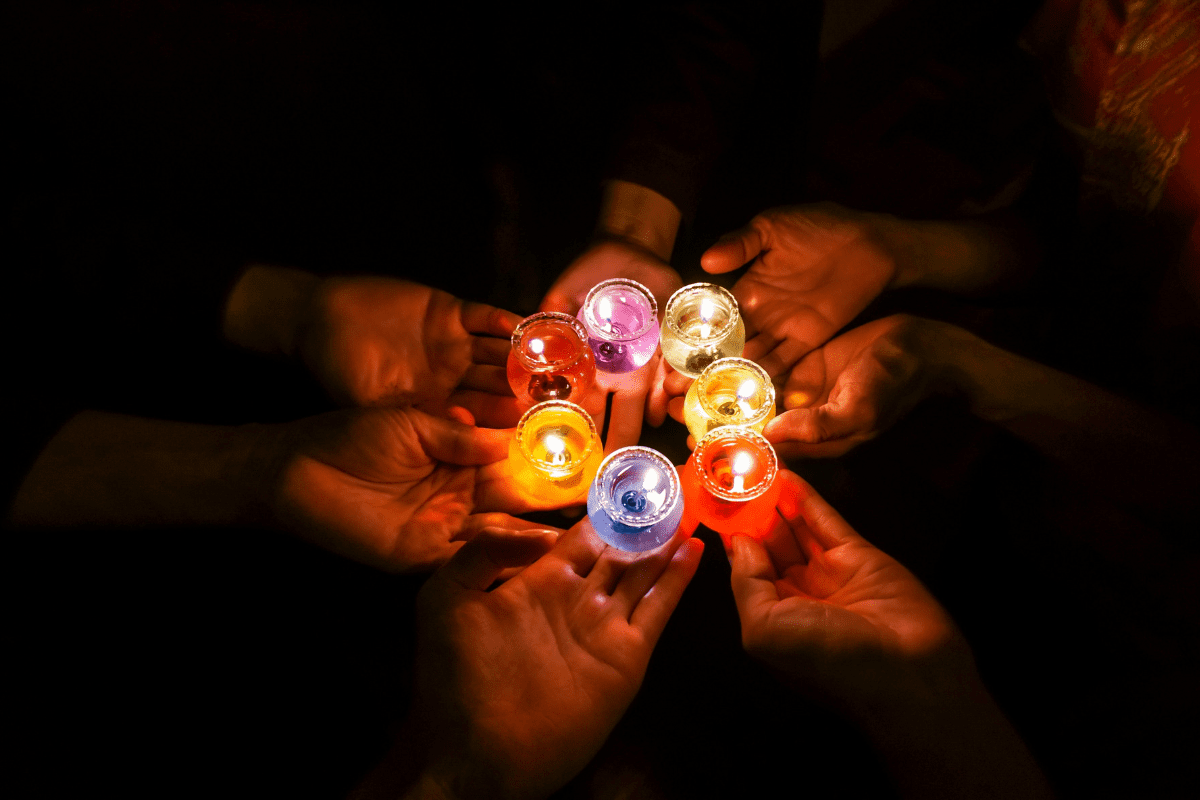In my blog entry, Happy New Year: 2022 in review and planning for 2023, I mentioned that I’ve been getting more questions about my practices. This year, I’ve decided to answer some of those questions here.
The following is a question I’ve received a couple of times in recent months:
How do you craft your practice mixing pantheons and spiritual traditions?
That’s an excellent question. The general advice on the internet is to keep it all separate, but combining elements from various spiritual traditions and mixing pantheons is widespread. The question is about where one begins and ends and how we compartmentalise and put it together. Some Pagans do not mix their pantheons within a ritual and wouldn’t call on Odin and Athena in the same ceremony, for instance.
I have tried compartmentalising my life and spiritual practices. I kept Pagan and non-Pagan blogs, avoided discussing spirituality in front of non-Pagans, attempted to maintain barriers between my circles of acquaintances and friends and my professional life, and keep my traditions and pantheons separate. That was a lot of work, and it felt unnatural.
I have an accepting family. And growing up Cuban in Miami, a diverse city with a solid Afro-Caribbean religious presence, I always felt safe exploring my spirituality openly. I have never been in the broom closet, and I never had to hide the spiritual parts of myself.
My religious life is like Cuban cuisine. Look at the plate of “Moros y Cristianos” (Moors and Christians, or black beans and rice), roast pork, sweet plantains, and yuca (cassava). You can figure out what’s indigenous, Spanish, and African, but we serve it up together, and it’s delicious.

My religion of one
Several traditions and great teachers inform my practice. These traditions include Wicca, historical pagan polytheism, Goddess spirituality, Lukumi, Tibetan Buddhism, tantra, and shamanic practices. Some of these are visible, and others play more of a role in my beliefs than my praxis.
My pantheon is large and varied. It contains:
- the goddess and god of my tradition, Georgian Wicca
- the goddess and god of the coven I belong to
- the orishas
- 13 goddesses
- seven Greek
- two orishas
- one indigenous Cuban
- one Tibetan Buddhist
- one Hindu
- one shamanic figure
My ritual style is recognisably Wiccan. I cast circles, call on guardians and spirits of the directions and elements, and cakes and ale are a must. My ancestral practice is recognisably Lukumi. There’s a white cloth, glasses of water, and a staff to call on the dead.
Putting it together
What does it all look like together?
For starters, we’re sharing space. Almost all my paraphernalia is in one room. There are goddess statues, Cuban religious art, various shrines, and my Olokun pot in a cupboard (she doesn’t like to be seen).
In my morning practice, I make offerings to my ancestors, offer water for spirits, purify the space with smoke, recite several prayers, pay honour to the goddess of the month, and meditate. I also make offerings to my Guerreros on Mondays and draw a weekly tarot card. I light candles on Fridays for Aphrodite, Oshun, and Yemaya.
Every month, I also tend Brigid’s flame one day and perform the Noumenia for Hecate one night. I perform an adapted puja for Kali, purify my home every New Moon, and celebrate Sabbats in a recognisably Wiccan way.
Juntos pero no revueltos
Juntos pero no revueltos is a common saying in Spanish that means together, but not mixed, like the European Union. Generally, one practice follows another, and I look to culture for the details. I make offerings to my Guerreros in a Lukumi manner at their shrine and then recite the Heart Sutra at the altar with Prajnaparamita. I’ll give rum to Eleguá but not to Prajnaparamita.
Although I’m an initiate of Georgian Wicca, my Wiccan practice is eclectic. The familiar structure may be present, but how I cast a circle, call quarters, and so forth varies. So do the deities being honoured during the ritual. A Samhain ritual that I lead for my coven may centre Hecate.
I’m slightly uncomfortable calling on non-European deities in a Wiccan ritual, but this is my hang-up. Calling on Brigid, Freya, and Athena is not more appropriate than Saraswati, Oshun, and Santa Muerte. None are interchangeable, and all have living traditions, social significance, and cultural challenges and vulnerabilities.
Similarly, some Pagans don’t mix their pantheons within a ritual. For example, they wouldn’t call on Odin and Artemis together. I’m flexible; it depends on factors such as the deities, ritualists, and the reasoning behind bringing them together.
It’s also worth noting that we have an ancient history of adopting foreign deities and practices through cultural exchange and colonisation. So, not much of this is new, but we can be more mindful of it. There’s a broader answer to the question, “How do you craft a practice mixing pantheons and traditions?” That is with curiosity, patience, humility, respect, and acceptance that everything is not ours for the taking. I interrogate myself: Why am I drawn to this? What will I find here that I can’t find in my ancestors’ traditions or those I have already adopted? How can I learn and integrate this ethically?
Thank you for the question. I’m always happy to contemplate, reflect, and share when possible. I hope this was helpful.

